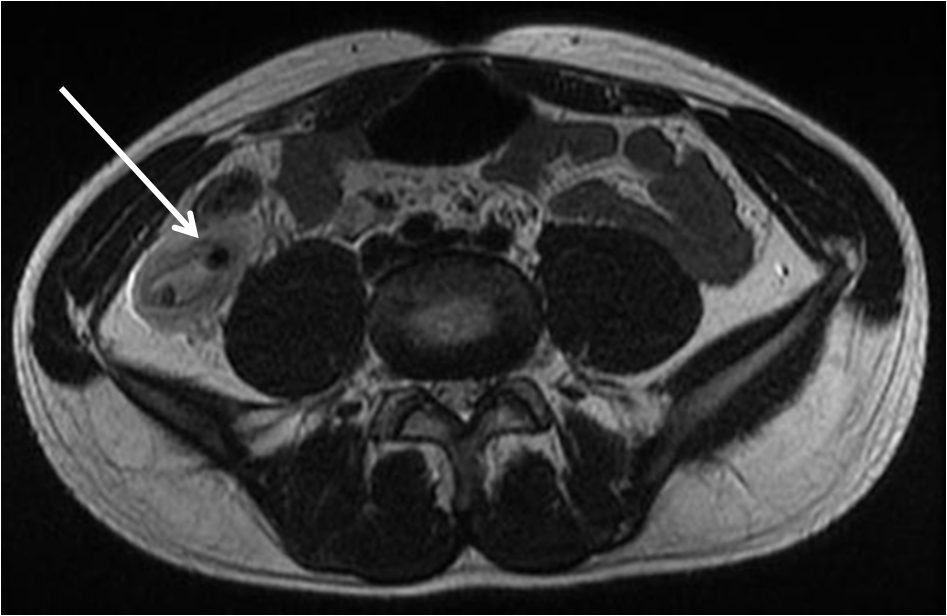Appendicitis MRI
Jump to navigation
Jump to search
|
Appendicitis Microchapters |
|
Diagnosis |
|---|
|
Treatment |
|
Case Studies |
|
Appendicitis On the Web |
|
American Roentgen Ray Society Images of Appendicitis |
Editor-In-Chief: C. Michael Gibson, M.S., M.D. [1] Associate Editor(s)-in-Chief: Farwa Haideri [2]
Overview
MRI may be helpful in the diagnosis of appendicitis. Magnetic resonance imaging has become the common technique for diagnosing appendicitis in children and pregnant patients.
MRI
MRI may be helpful in the diagnosis of appendicitis.[1]
Advantages of MRI
- The high dosage of radiation can be harmful for children and developing fetus, while posing a nearly negligible risk in healthy adults.
- The enlarged uterus displaces the appendix during the second and third trimesters of pregnancy, making it difficult to find by ultrasound. An MRI is therefore preferred.[1]
Findings
- On an MRI, a periappendiceal stranding appears as an increased fluid signal on the T2 weighted sequence (while it is reflected by fat stranding on a CT scan).[1][2]

Source:Case courtesy of Dr Andrew Dixon, <a href="https://radiopaedia.org/">Radiopaedia.org</a>. From the case <a href="https://radiopaedia.org/cases/9644">rID: 9644</a>
References
- ↑ 1.0 1.1 1.2 Appendicitis. Wikipedia (26 November 2015).https://en.wikipedia.org/wiki/Appendicitis#Imaging Accessed on December 7, 2015
- ↑ Image courtesy of Radiologypics. Radiologypics